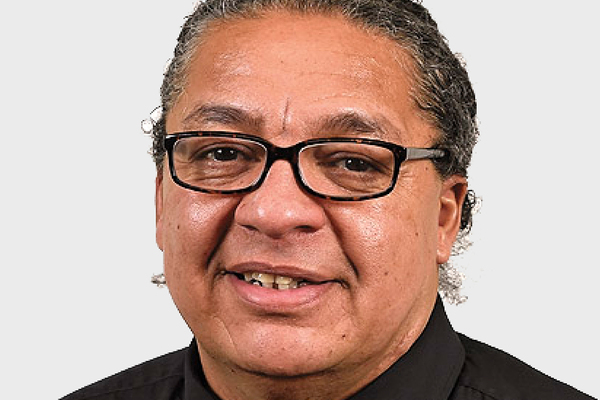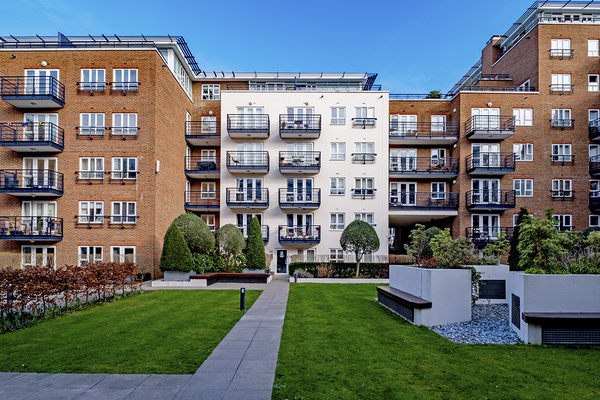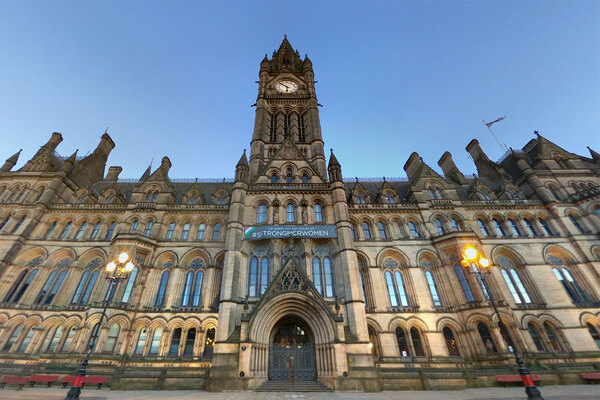You are viewing 1 of your 1 free articles
The HRA borrowing cap explained
Theresa May has used her speech at the Conservative Party conference to announce that the government will “scrap” the Housing Revenue Account (HRA) borrowing cap. Below, we outline the history of this contentious area of housing policy.
What is the HRA borrowing cap?
Local authority housing is contained within the HRA – a ringfenced budget which effectively operates as a business of its own separate to councils’ other operations.
The HRA takes its income from rents and services charges collected from tenants, and spends this money exclusively on building and maintaining housing.
Councils are able to borrow money within their HRAs in order to build more homes to provide more income, or even to refurbish or regenerate existing homes. However, each council has a limit to how much they are allowed to borrow which is far tighter than the value of their assets (eg the housing stock), in a Treasury attempt to control public borrowing levels. Town halls say this debt cap greatly restricts their ability to invest in building much-needed new homes.
Telling the Conservative faithful in Birmingham today that “it doesn’t make sense” to stop councils from helping solve the housing crisis, Ms May said the government is “scrapping that cap”.
Timeline of the HRA borrowing cap
April 2012: HRA borrowing caps are first introduced for all 169 stock-retaining councils as part of local government self-financing reforms. These reforms permitted councils to keep the rents they collected locally for the first time – a move started towards the end of the Labour government.
But the Treasury was nervous of stretching the national borrowing too far, so it set a cap on what could be borrowed. Each authority’s debt level is set based on a complex calculation based on the previous HRA subsidy system.
December 2013: At the Autumn Statement in December 2013, then-chancellor George Osborne produced a trademark ‘rabbit out of the hat’: he would provide councils with another £300m of HRA borrowing headroom, across the whole sector. The move, he claimed, would build 10,000 affordable homes. A drop in the ocean, some said, but for others it was a significant step towards greater borrowing flexibility.
October 2014: However, the bidding criteria for Mr Osborne’s £300m was very strict – including rules around partnering with housing associations and selling off higher-value homes to help pay for development. Some councils also claimed the interest on the borrowing was too expensive. All that resulted in less than half the money being allocated to build a measly 1,700 homes – a fraction of the government’s initial 10,000 target. The programme was eventually quietly wound down.
March 2017: A couple of years passed, with councils continuing to call for more borrowing flexibility and managing to build only around 3,000 homes annually between them. Then, in March 2017, three councils – Stoke, Sheffield and Newark and Sherwood – met officials at the Department for Communities and Local Government, as it was then known. They hoped to strike ‘bespoke deals’ with government on their HRA caps, gaining additional headroom in exchange for promises on housing delivery. They met with civil servants a number of times over the coming months, producing reams of data to aid their case.
May 2017: In an interview with BBC Radio 5 Live, sitting housing minister Gavin Barwell reveals that “innovative” councils will be invited to come forward with bids to increase their HRA borrowing caps as part of the Conservatives’ election pledge to deliver “a new generation of social housing”. It’s the clearest sign yet that the government is open to discussing HRA limits again.
November 2017: At the Autumn Budget, chancellor Philip Hammond announces that government will provide £1bn of additional borrowing capacity for councils in “areas of high affordability pressure”. Inside Housing understands that at least eight other councils had approached government with requests for HRA deals by this time, and Savills research had said that lifting the cap could deliver 15,000 homes.
June 2018: The long-awaited prospectus for Mr Hammond’s £1bn programme is published. It reveals that the £1bn will be limited to areas where average weekly private rents are at least £50 a week more than social rents – excluding Stoke, Sheffield and Newark and Sherwood. It’s also revealed that half the money will be reserved for London boroughs. However, there are less strings attached this time around; councils are told they’ll be able to blend the money with grant or Right to Buy receipts.
October 2018: At the Conservative Party conference, just three days after the bidding for the £1bn programme closes, Ms May announces her plan to ditch the HRA borrowing cap. It comes after Inside Housing reveals the programme is likely to be swamped with demand in London – while councils outside the capital are also known to have thrown in chunky bids. The move is warmly welcomed by the housing world, while Savills suggests it could see 100,000 council homes delivered.
More on the HRA cap announcement
Government now appears to recognise the role of councils - but it needs to scrap Right to Buy Terrie Alafat finds much to like in Theresa May’s council borrowing cap announcement, but wants the government to go much further
New council house borrowing will be under prudential rules, says Porter More details of how new council borrowing rules are likely to work, from the chair of the Local Government Association
More details to come in Budget on borrowing cap The government has been unable to provide any further detail on its plans to scrap the borrowing cap, saying more information will follow in the Budget later this month.
The HRA borrowing cap explained A useful explainer of the context to the council borrowing cap along with a timeline of the story so far
Councils say scrapping debt cap will boost house building More reaction from local authorities
Scrapping HRA cap ‘could see 100,000 homes built’ Details of estimates from Savills on the potential impact of the government’s decision
May’s HRA announcement deserves its warm welcome – but the Budget will be the real test Blogger Jules Birch picks over the announcement
Sector heralds lifting of the borrowing cap as excellent news Reaction to the HRA cap axe from across the social housing sector
Government expects annual £1bn of council borrowing once debt cap is scrapped The first indication of the amount of borrowing ministers are expecting once the cap is no more
Theresa May announces plan to scrap council borrowing cap All the details of Theresa May’s surprise announcement
May's Conservative Party conference speech: the housing bits in full
Below is the text of the housing section of Theresa May's party conference speech:
"Last year I made it my personal mission to fix another broken market: housing.
We cannot make the case for capitalism if ordinary working people have no chance of owning capital.
To put the dream of home ownership back within their reach, we scrapped stamp duty for most first-time buyers – and over 120,000 households have already benefited.
We’ve helped half a million people onto the housing ladder through other schemes like Help to Buy.
And this week we have announced that we will charge a higher rate of stamp duty on those buying homes who do not live and pay taxes in the UK, to help level the playing field for British buyers.
The money raised will go towards tackling the scourge of rough sleeping.
But the truth is that while these measures will help in the short term, we will only fix this broken market by building more homes.
And that is what we are doing.
More new homes were added to our stock last year than in all but one of the last 30 years.
But we need to do better still.
The last time Britain was building enough homes – half a century ago – local councils made a big contribution.
We’ve opened-up the £9 billion Affordable Housing Programme to councils, to get them building again.
And at last year’s conference I announced an additional £2 billion for affordable housing.
But something is still holding many of them back.
There is a government cap on how much they can borrow against their Housing Revenue Account assets to fund new developments.
Solving the housing crisis is the biggest domestic policy challenge of our generation.
It doesn’t make sense to stop councils from playing their part in solving it.
So today I can announce that we are scrapping that cap.
We will help you get on the housing ladder.
And we will build the homes this country needs."
Speech given to the Conservative Party conference on 3 October, 2018.














